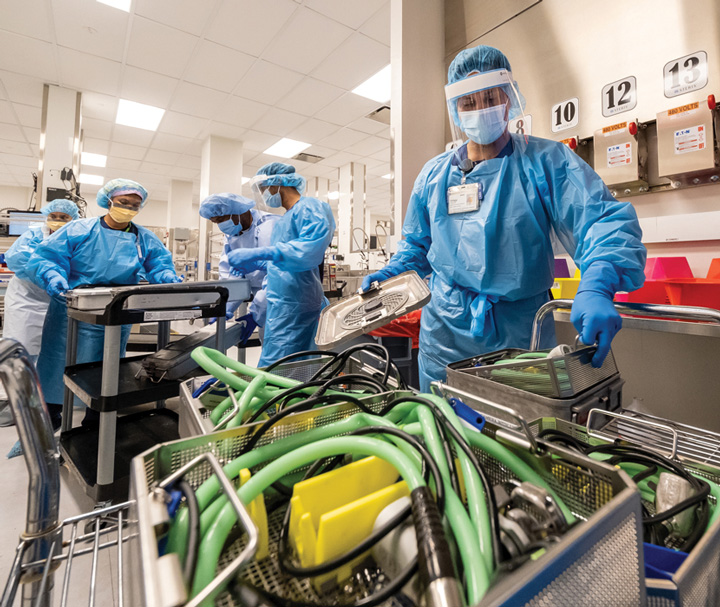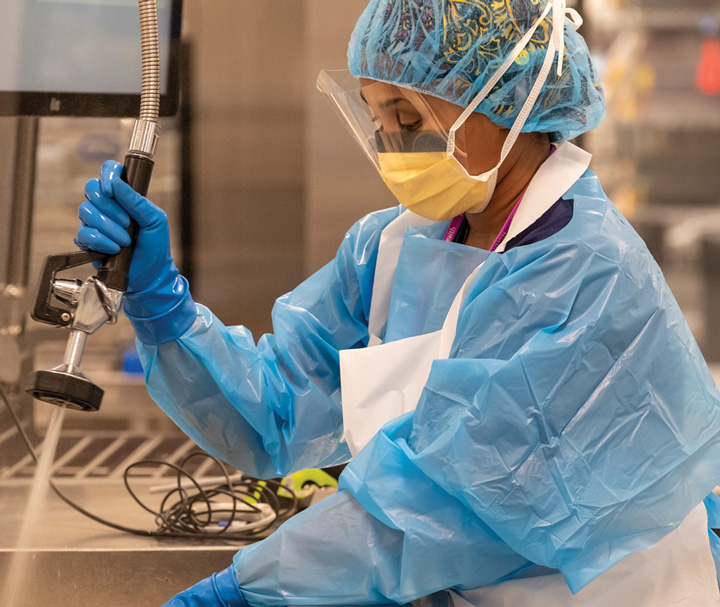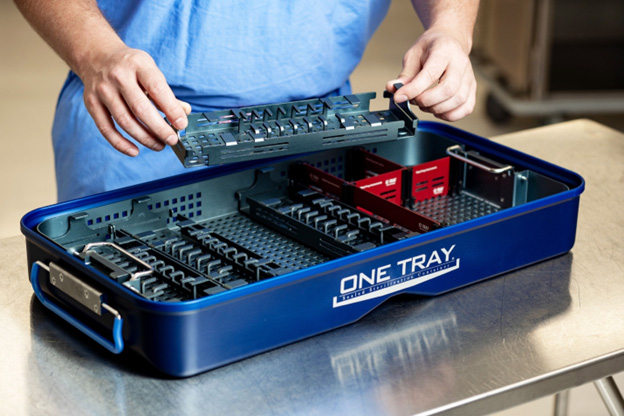Here’s where to focus your energy when tackling complex IFUs.
 Northwell Health
Northwell Health WHERE TO START? Sterile processing techs deal with a high volume and variety of instruments and devices, each with its own cleaning and disinfection instructions and requirements.
Telling your sterile processing technicians to “just follow the manufacturers’ instructions for use (IFUs)” can often be about as helpful as telling someone to “just read a quantum physics textbook” to understand the fundamental properties of matter and energy. IFUs, especially for instruments and devices with internal channels such as endoscopes, can be notoriously complex and difficult to follow, especially for new and inexperienced sterile processing staff.
When educating and training reprocessing staff, Katharine Hoffman, MPH, CIC, NCMA, LSSGB, and Chrystia Johnson, MSHS, MLS(AMT), CIC, LSSYB, the infection prevention community health program manager and director of infection prevention/quality division, respectively, at JPS Health Network in Fort Worth, Texas, recommend arranging the small steps in IFUs into six major chunks, and then focusing on one section at a time:
Point-of-use treatment. Review the IFU to determine its requirements for initial precleaning at the point of use. This step usually includes flushing the channels of complex devices like endoscopes prior to their transport to the reprocessing area.
Manual cleaning. This step in the reprocessing area is taken to remove soil, contamination and potential bioburden from the device. However, this tactic does not kill microorganisms that may be on or inside it.
High-level disinfection (HLD) or sterilization? The IFU will describe if the instrument or device is compatible with HLD and/or sterilization. While sterilization is the preferred method for reprocessing, many IFUs for devices like endoscopes provide guidance only for HLD, which means they cannot undergo sterilization methods.
Device reprocessing. This chunk is particularly important for facilities that reprocess scopes. Automated endoscope reprocessors can be utilized for HLD, but first confirm that the device in question is compatible with them. If only manual reprocessing is supported by the manufacturer, ensure the linear process steps can be performed.
Transport. The IFU will describe how the instrument or device should be transported between the OR and the reprocessing area, and if there are any special requirements involved such as keeping the device moist. If using a rigid container or bin to transport instruments, review its IFU for its own proper cleaning and disinfection methods.
Storage requirements. If the reprocessed instrument or device isn’t immediately being routed to an OR, how should it be stored so that it stays clean, undamaged and safe for patients? The IFU will tell you. Ms. Hoffman and Ms. Johnson urge leaders to carefully check IFU storage requirements to ensure the device is stored in a manner that prevents damage, contamination or water retention. The same IFUs will tell you if a reprocessed instrument or device that is in storage should be reprocessed after a given amount of time.
Each IFU often will have its own deeper requirements that are specific to a certain make or model of a device. The take-home point is quite simple: Your sterile processing staff should follow the IFUs of every instrument or device they reprocess to the letter.
.svg?sfvrsn=be606e78_3)



.svg?sfvrsn=56b2f850_5)